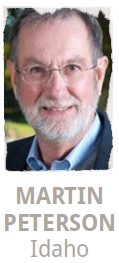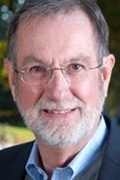
For many Idahoans, Ken Burns’ recent public television series, “Country Music,†was an opportunity for some serious nostalgia. It certainly was for me.
I grew up in the Lewiston Clarkston Valley. Local nightclubs had names like The Stables, and The Golden Spur, which gives you a hint at the kind of music they featured.
The local radio station featured a program called the Snake River Stampede, which was hosted by Clearwater Clem. (Clem’s real name was Keith Jackson and when he left his job in Lewiston, he went on to become one of America’s best known sportscasters.) When I moved to Boise in 1968, I discovered that Nampa had a rodeo called the Snake River Stampede. I assumed they had stolen the name from the Lewiston radio program, but quickly discovered that just the opposite was true.
I used much of my teenage spending money to buy albums by Hank Snow, Hank Thompson, Johnny Cash, Jimmy Rogers and other classic country artists. I still have those albums and wish I could find a new home for them. On Saturdays there were broadcasts from the Grand Old Opry and from a powerful Bakersfield station featuring Kern County Country Time.
While attending the University of Idaho, I worked part-time as a disk jockey at a country music station in Pullman, Washington. Also working there was Paul J. Schneider, who would go on to become the decades long voice of the Boise State Broncos and the best-known sports personality in southern Idaho. Yet another case of being a country music DJ as a steppingstone to the world of sportscasting.
As a university student, we used to occasionally go up to Spokane the see country music shows at the coliseum. These were shows that would feature up to half a dozen well known stars at admission prices that even a student could afford.
One night in the mid-60s, a friend and I went up to see a show featuring Johnny Cash, Tex Ritter and Hank William Jr., among others. There was no reserved seating, so we arrived early in order to get the best seats possible. Before going in, we stopped at the refreshment stand. I commented to my friend that the person I was really looking forward to seeing was Luther Perkins, Cash’s guitar player. The gentleman in front of me in line turned around, stuck out his hand, and said, “I’m Luther Perkins, who are you?†He invited us to be his guests backstage for the concert. During the course of the evening, he introduced us to all of the stars. Johnny Cash said that he was tired of being on the bus and in hotel rooms and wondered if they could come over to our place to party after the concert. I told him that would be great, but we were from out of town. “Where you from?†he asked. I replied we were from a town he had never heard of called Moscow, Idaho. He responded that he knew where Moscow was. “It’s just outside of Potlatch.â€
He said that in the fifties when he and many other country stars were touring the country playing one night stands, there were two towns that everyone knew. They were Potlatch, Idaho, and Roseburg, Oregon. Both lumber towns. He said he would perform at the Riverside in Potlatch and spend the night in a hotel room with an old metal bed and a single light bulb that hung down from the ceiling.
At this point Tex Ritter overheard our conversation and said that he also knew where Moscow was and that he had spent a lot of time there. His daughter and son-in-law lived in Moscow where he was working on a graduate degree in mathematics.
Before we left the coliseum that night, Luther Perkins grabbed a program and wrote his name, home address and home phone number on it. Handing it to me he said that if we were ever to get to Nashville, we should call him so we could get together. Unfortunately, life went on and I never got to take him up on his offer. But I still have the program.
Idaho’s appreciation of country music wasn’t entirely focused in the north. Garden City had a number of night clubs featuring well-known country performers. One of those performers was Roger Miller. One day he was driving down Chinden Boulevard in Garden City on his was to the club where he was performing. He drove past a trailer park with a sign out front that said Trailers for Sale or Rent. That night when he got back to his room at the Hotel Boise, he sat down and wrote that would become his greatest hit, “King of the Road.â€
Gone are the days of major country stars performing one-night stands in small night club venues in towns like Potlatch and Roseburg. This past summer, the hottest star in the current generation of country entertainers, Garth Brooks, came to Boise to do a concert at Albertston stadium. The concert sold out within minutes, prompting Governor Brad Little to call Brooks and ask if he would consider adding a second night to his schedule. Brooks agree and the Friday and Saturday night concerts both sold out with a total attendance of 86,000. By way of comparison, there are only three cities in Idaho that have more than 86,000 people.
After all these years, country music if obviously alive and well in Idaho. And thank you Ken Burns, for stirring up a lot of great memories.



